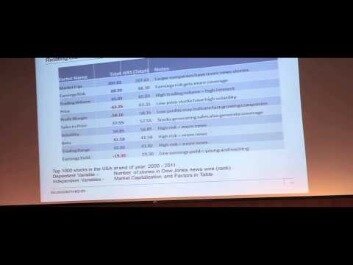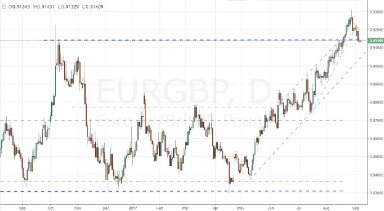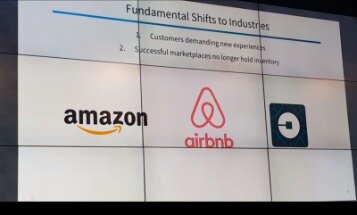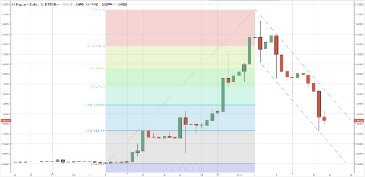The Latest Volatility News For Financial Advisers And Intermediaries From Professional Adviser
Content
High volatility is often considered to be a bad thing because people are understandably averse to losing money. The fear of losing money overwhelms their desire to potentially make higher gains by taking more risk, so they focus on trying to limit potential losses.
Figure 5 reports the estimated coefficients of the TVP-HAR model for the G7 countries and the ten business sectors under consideration. The grey shaded area represents the Covid-19 financial crisis and is assumed to span from 1/2/2020 onwards to maintain comparability with the main paper results. A cursory inspection reveals that during the Covid-19 financial crisis the coefficients of the TVP-HAR are found to be highly variable. The goodness of fit markedly deteriorates, thus indicating the inability of a linear model to capture the volatility transition effect. In addition, while it is not possible to accurately reflect on the intensity and/or timeliness of the Covid-19 impact upon countries/sectors volatilities, we can clearly infer a certain heterogeneity in the countries’ and sectors’ responses to the crisis. As such and in the broadest of strokes the results of the TVP-HAR model are similar to those of the ST-HAR.
To accommodate the diversity of volatility across financial markets, that is likely at the onset of an unfamiliar pandemic, we introduce a specification based around the HAR model to capture regime change. This specification, which we refer to as ST-HAR, is a combination of a smooth transition model and the heterogenous autoregressive model. The smooth transition allows for a continuum of intermediate states between the two extreme volatility regimes. Not only does this specification model non-linear dynamics that are inherent in the volatility process, it provides estimates of the intensity and the timeliness of the transition. The UK and the US were the most affected, where the heterogeneity among business sectors may reflect early variations in the adoption of lockdown measures upon the financial markets. Countries that engaged sooner and more thoroughly in containment measures against Covid-19 weathered the financial crisis better.
Business
Gold markets were down 1.62% midday, while silver had been hit even harder, dropping 3%. Platinum also was down almost 3%, and copper, one of the biggest “highflyers” in the commodity space recently, has lost almost 2%.
Since 2001 the Shares Awards have recognised the high quality of service and products from companies in the world of retail investment as voted for by Shares’ readers. Currencies were a little bit more cautious during the trading session as the Euro is slightly negative, while the British pound gained 2/10% for the session. The dollar was up 19 basis points against the Japanese yen, while the Australian dollar lost 2/10% against the greenback as we continue to see the 0.80 level offers significant resistance. As we head towards the Non-Farm Payroll announcement on Friday, traders may be a bit hesitant to put on large positions. While the correlation between ADP and the Non-Farm Payroll figures, the official government figures, tend to be tenuous at best, it can give traders an idea as to whether or not the Non-Farm Payroll figures on Friday will come in as expected, or perhaps miss the mark.
Where Markov and (SE-)TAR models assume an instantaneous transition between the regimes, at an estimated breakpoint date, STAR models allow a gradual transition between regimes, with an estimated parameter to gauge the intensity of the transition. Although two regimes (e.g., calm/crisis) are commonly used, all models can accommodate multiple, subject to data limitations. Contrarily to Markov models where the switching process is endogenously determined, the TAR/STAR models can accommodate exogenous factors that may drive the regime change. Such non-linear models may be embedded within other models to allow non-linearities and/or regime changes.
Technology sectors were the last to be affected as the Covid-19 lockdown measures have accelerated the adoption of remote working platforms, while people sought distraction and entertainment elsewhere online. It is interesting that these are the markets with the highest heterogeneity in the Covid-19 response, as indicated by the high values in the QCV metric.
High volatility sounds like bad news for most investors since it typically means accepting higher risk and potentially higher losses, but it can also provide opportunities. And remember, if volatility was always low, making a return would be far more difficult since prices would move more predictably. Volatility can present an opportunity to make gains, as long as you learn how to react to it.
The Eurekahedge Long Short Equities Hedge Fund Index was up 0.95% in January, outperforming the S&P 500 by 2.05% during the month. In terms of yearly return, the mandate recorded their third double-digit annual return over the last four years, with their 13.25%, 11.86% and 17.70% return in 2017, 2018 and 2020 respectively. In terms of annual return, the Greater China mandate had an exceptional performance in 2020 as they gained 35.48%, with the top 10% of hedge funds gaining an average return of 80.54%. In the same vein, the assets under management of the Greater China mandate grew to US$89.7 billion from US$67.8 billion since end-2019 – recording the bestAUM growth of 32.3% since inception.
More News
The Tokyo exchange picked up just a touch over ½%, while the United States is seeing the S&P 500 drop by 56 basis points in midday trading. The Federal Reserve is more concerned about the speed of the move of bond yields than the actual move itself, as seen by comments coming out of Jerome Powell, as well as several of the regional governors in recent speeches. With that being said, traders are feeling a bit more confident about stepping out into the risk curve, as it appears that the interest rates rising in America are based more upon the idea of the “reflation trade” than any type of economic concern. Nonetheless, if the 10-year yields continue to rise rapidly, that could throw another monkey wrench into trading. OPEC+ may be watching the US shale production numbers, as higher prices will certainly flood the market with US-based crude oil. Shale production has been a major thorn in the side of OPEC for several years, as they now have to worry about prices being high enough to make shale extraordinarily profitable. Oil ministers from OPEC+ are due to meet on Thursday, and any announcement coming out of that meeting will obviously have a major influence on the supply/demand equation when it comes to the crude oil markets.
The key attribute of this approach is the intuitive way it can capture the dynamics of the Covid-19 crisis unfolding, while the limitations of this technique in comparison to the ST-HAR model are presented in the main part of the paper. conclude that the impact of the Spanish flu in the 1920s provide guidance on how the Covid-19 pandemic may impact mortality and economic contraction. find that only unexpected changes in the Federal Open Market Committee announcements affect the volatility of the federal fund rate. combine a Markov-switching model with the Heston stochastic volatility model to capture the option strikes that lie in the tail of the distribution of the volatility process. Moreover, the use of RV in conjunction with HAR models circumvents the computational burden and complexity of the earlier ARCH/ARFIMA/SV approaches.
Thereafter, a variety of lock-down measures impeded economic activity with consequential effects upon financial markets. In little over a month, the Dow Jones and the S&P 500 fell by 35%, where stock market volatility was comparable to that of the 1929 Great Crash 1929, the 1987 Black Monday and the 2008 Global Financial Crisis (Baker, Bloom, Davis, Kost, et al., 2020). At Wealthify, market volatility is a key reason why we say investors should think about investing for longer-term periods of a minimum of 5 years.
Bitcoin Volatility Index bitvol Makes First Trade
The Technology sector was hit the latest and least severely, as imposed lockdown measures forced people to explore various web-based entertainment and distraction options. Country-wise the UK and the US were the most affected with the highest heterogeneity in their business sectors’ response; a possible reflection of the ambiguity in the initial response and adoption of lockdown measures. Financial markets’ response to Covid-19 is akin to response in previous financial crisis rather than previous pandemics. Using monthly stock and bond returns data from both the USA and the UK, this study addresses the issue of whether news implied volatility and its main components have affected in any significant manner the time-varying stock–bond covariance, their returns and their variances. The time varying association between the two markets has attracted considerable attention due to its important implications for asset allocation, portfolio selection and risk management.
The threshold coefficient indicates the degree of tolerance until the volatility shifts to another regime. Low values indicate sectors that are among the first to be affected as Covid-19 cases increase. Due to the importance of these parameters in understanding the evolution of the crisis, we now elaborate further upon them. Stock market volatility, geopolitical risk indicators and economic policy uncertainty indices are greatly affected by policymakers’ actions and developments at the Covid-19 front (Baker, Bloom, Davis, & Terry, 2020; Baker, Bloom, Davis, Kost, et al., 2020; Sharif et al., 2020). document a varying impact of macroeconomic news upon the volatility of major exchange rates for the duration of the 2008 GFC. Other studies focus upon key political events, economic uncertainty, macroeconomic announcements and financial crises upon volatility (Moore & Wang, 2007; Tiwari et al., 2020).
Eventually the initiative must pass to employers and employees in directing capital investments to long-term viable activities. Table 2 presents the sector wise estimation results of the ST-HAR model, where median values across the G7 economies are reported as well as standard goodness-of-fit statistics. In particular, the linearity test shows the appropriateness of a non-linear HAR specification over the linear equivalent.
Is Market Volatility Staging A Strong Comeback?
Fusion Media or anyone involved with Fusion Media will not accept any liability for loss or damage as a result of reliance on the information including data, quotes, charts and buy/sell signals contained within this website. Please be fully informed regarding the risks and costs associated with trading the financial markets, it is one of the riskiest investment forms possible. Morningstar.co.uk contains data, news and research on shares and funds, unique commentary and independent Morningstar research on a broad range of investment products, and portfolio and asset allocation tools to help make better investing decisions. Examining the sectorial impact of a crisis can give important insights on how the crisis has spread across the economy. Efthyvoulou study the impact of financial stress in the production and market services sectors and find that although both sectors are affected, the channels of the impact differ. Rioja et al. provide evidence that recession accompanied by banking crises have a profound negative effect across all business sectors.
During this briefing, we will hear from a number of fixed income managers about their response to the extraordinary events of the past few months and how they have been navigating turbulent market conditions. The information contained within is for educational and informational purposes ONLY. It is not intended nor should it be considered an invitation or inducement to buy or sell a security or securities noted within nor should it be viewed as a communication intended to persuade or incite you to buy or sell security or securities noted within. Any commentary provided is the opinion of the author and should not be considered a personalised recommendation. The information contained within should not be a person’s sole basis for making an investment decision.
- However, this can merely lead prices to fall back to more realistic and sustainable levels, as we saw in February 2018.
- Volatility can present an opportunity to make gains, as long as you learn how to react to it.
- Efthyvoulou study the impact of financial stress in the production and market services sectors and find that although both sectors are affected, the channels of the impact differ.
- Market volatility to COVID-19 crisis second only to 1987 stock market crash over past 120 years.
- Stockopedia is here to help individual investors beat the markets by being the very best in stock analysis, research & community.
Massive amounts of liquidity injected to the financial markets have been effective – thus far – in containing volatility. Market players feel comfortable around the idea that the Federal Reserve will jump in to bail out the markets if anything goes wrong. Our results show a non-linear transition to a crisis regime for all countries and sectors.
News Implied Volatility And The Stock
Figure 2 presents estimated threshold smoothing weights against threshold variables for selected sectors. In the top row Health Care and Materials respectively show the highest and lowest crisis intensity (estimated slope coefficients (γ)). By analogous metrics, in the bottom row Oil & Gas and Technology were respectively affected first and last (estimated slope thresholds (ψ)). Of particular relevance are the estimated slope (γ) and threshold (ψ) coefficients. These are highly statistically significant, further corroborating the non-linear smooth transition between the volatility regimes. High values of the slope coefficient indicate an abrupt transition between volatility regimes.
US presidential elections are almost always a source of volatility for stock markets. Adding to the usual tumult this time around are uncertainties surrounding postal ballots, which are set to surge this year as voters stay home amid Covid-19 concerns. A close result could trigger recounts or even an arbitration in court, which could leave the country in limbo and set the stock market spiralling. The T3i BitVol Index from T3 Index, a financial indexing firm, measures the 30-day implied volatility of bitcoin. Now, it is important to understand that the VIX is a forward-looking indicator of how investors perceive potential volatility in the markets.
The results suggest that absolute intraday returns for high-frequency data exhibit autocorrelations and that aggregated returns display heavy tails. Standardising the returns of the SPY index using eleven different volatility measures produces distributions that are closer to a normal distribution. We find that various volatility measures are significantly correlated with trading volume, and hence that HAR-class models that include trading volume yield better volatility forecasting results than existing models. However, this effect may be limited to data from the relatively non-volatile pre-crisis and post-crisis periods. High-frequency returns based on business-time sampling have smaller jump frequencies, jump components and intraday periodicity patterns, than calendar-time data, which may be useful for volatility analysis. Intraday periodicity has a notable impact on jumps for both sampling schemes, however, and adjusting for intraday periodicity produces fewer jumps for all returns and smaller jump components for the majority.













